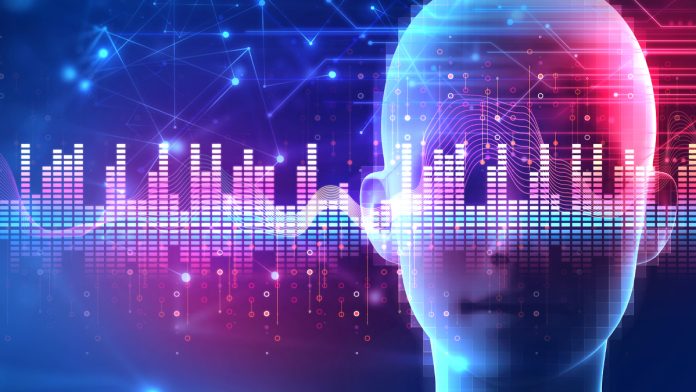In today’s rapidly evolving creative landscape, technology is reshaping how sound is designed and music is scored. Innovations in computational methods empower artists and engineers alike to push the boundaries of auditory expression. By harnessing intelligent algorithms and real-time data, new techniques are emerging that transform traditional composition practices. One remarkable example is AI in Sound Design and Music Scoring, which offers fresh perspectives in artistic audio production.
| Table of Contents | |
|---|---|
| I. | Adaptive Soundtrack Composition |
| II. | Deep Learning for Music Composition |
| III. | Generative Adversarial Networks (GANs) in Sound Design |
| IV. | Multi-Modal Integration for Cinematic Audio |
| V. | Emotion-Driven Audio Generation |
| VI. | Procedural Audio Synthesis |
| VII. | AI-Assisted Audio Mixing and Mastering |
| VIII. | Interactive and Personalized Sound Experiences |
| IX. | Collaborative Creativity: Human-AI Hybrid Composing |
Adaptive Soundtrack Composition
Adaptive soundtrack composition revolutionizes how scores align with dynamic narratives. Composers now use systems that adjust musical themes based on scene progression, mood changes, or user interactions. These methods allow a seamless blend between ambient soundscapes and dramatic musical cues, creating experiences that evolve organically with the story. This flexibility offers filmmakers and game designers unprecedented control over emotional pacing and immersion.
Deep Learning for Music Composition
Deep learning techniques have unlocked innovative avenues in music creation. Neural networks analyze vast datasets of musical patterns to generate original compositions with distinctive styles and textures. Such systems can suggest harmonies and rhythmic structures that resonate with modern audiences. In this context, AI in Sound Design and Music Scoring not only augments creativity but also offers composers an intelligent partner to refine ideas and experiment with unconventional melodies.
Generative Adversarial Networks (GANs) in Sound Design
Generative Adversarial Networks (GANs) are making significant inroads into sound design by pitting creative generators against evaluative discriminators. This rivalry results in the production of intricate, layered sound textures that might be challenging to conceive manually. GANs stimulate novel auditory outcomes that enrich ambient effects and experimental music. The process, deeply rooted in computational creativity, exemplifies how AI in Sound Design and Music Scoring is reshaping the sonic landscape.
Multi-Modal Integration for Cinematic Audio
Multi-modal integration fuses visual, textual, and auditory inputs to craft immersive cinematic audio environments. This approach synchronizes musical scores with visual storytelling, ensuring that each auditory cue enhances the narrative on screen. By analyzing diverse data streams, algorithms can generate soundscapes that perfectly mirror the emotional tone of a scene. Such sophisticated synchronization underscores the transformative role of AI in Sound Design and Music Scoring in contemporary filmmaking.
Emotion-Driven Audio Generation
Emotion-driven audio generation tailors soundscapes to reflect and amplify human feelings. Advanced models assess emotional cues from imagery, dialogue, or environmental context and craft soundtracks that evoke targeted responses. These systems enable nuanced control over the mood of a piece, from serene and introspective to intense and dramatic. The sensitivity of AI in Sound Design and Music Scoring to human emotion paves the way for highly personalized auditory experiences that speak directly to listeners’ hearts.
Procedural Audio Synthesis
Procedural audio synthesis employs algorithmic methods to create sounds in real time. This technique generates dynamic effects and musical elements that adapt to environmental changes or user actions, ensuring each experience is unique. By avoiding repetitive loops, procedural synthesis offers a spontaneous and organic feel to digital soundscapes. Its capacity for on-the-fly creation exemplifies modern trends in audio innovation, reinforcing the broader impact of emerging technologies on sound design.
AI-Assisted Audio Mixing and Mastering
AI-assisted audio mixing and mastering streamline the post-production process by automating tedious tasks while preserving artistic intent. Intelligent systems analyze tracks, balance levels, and optimize frequencies to achieve professional-quality sound. This integration of technology accelerates workflows and reduces human error, allowing creative professionals to focus on expression rather than technicalities. With tools like AI in Sound Design and Music Scoring, engineers can deliver polished, high-fidelity productions with unprecedented efficiency.
Interactive and Personalized Sound Experiences
Interactive sound experiences leverage real-time feedback and user inputs to create audio that adapts to individual preferences. Through sensor data and contextual analysis, systems adjust musical elements to suit different moods, environments, or gameplay styles. This personalization not only enhances engagement but also fosters a deeper connection between the audience and the work. The evolution of AI in Sound Design and Music Scoring fuels these adaptive technologies, making every listening experience uniquely tailored.
Collaborative Creativity: Human-AI Hybrid Composing
Collaborative creativity merges the intuitive artistry of human composers with the analytical prowess of artificial intelligence. In this hybrid approach, AI tools propose musical ideas, while human musicians refine and contextualize these suggestions to produce emotionally resonant works. This synergy encourages experimentation and unlocks new creative territories that were once unimaginable. The integration of AI in Sound Design and Music Scoring in collaborative projects heralds a new era where technology and artistry coalesce harmoniously.

